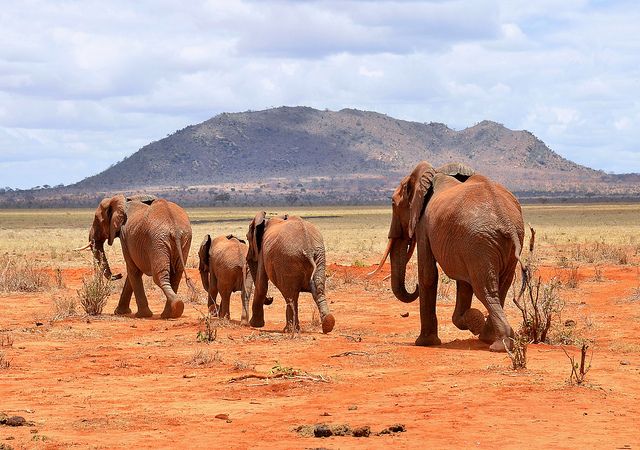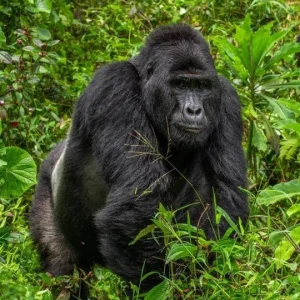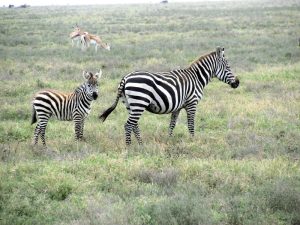Planning a safari in Kenya involves more than choosing a destination. Timing plays a critical role in determining what wildlife you see, the weather you experience, and even the cost of your trip. Kenya’s climate and wildlife patterns follow predictable seasonal rhythms, making certain times of the year more rewarding depending on your safari goals. Best Time of the Year for a Safari in Kenya
What is the best time to go on a safari in Kenya?
The best time to go on safari in Kenya is during the long dry season from June to October. These months offer excellent game viewing conditions because animals gather around remaining waterholes and rivers, making them easier to spot. The dry season also coincides with the world-famous Great Wildebeest Migration in the Maasai Mara, which typically peaks between July and October. The weather during this period is warm but not excessively hot, and rain is rare, allowing uninterrupted game drives.
During the dry season, vegetation is sparse, giving unobstructed views of wildlife and increasing the chances of spotting elusive predators like leopards and cheetahs. Popular parks such as Amboseli National Park, Tsavo National Park, and Lake Nakuru National Park also see heightened wildlife activity, making this window ideal for both first-time and seasoned safari-goers.
When does the Great Wildebeest Migration occur in Kenya?
The Great Wildebeest Migration is one of nature’s most spectacular events. In Kenya, it generally occurs between July and October, when millions of wildebeest, zebras, and gazelles cross from Tanzania’s Serengeti into the Maasai Mara in search of fresh grazing lands. The most dramatic moments happen at the Mara River crossings, where herds face strong currents and lurking crocodiles.
If witnessing this phenomenon is your main goal, plan your trip between late July and early October. However, migration patterns can shift slightly depending on rainfall, so flexibility in your travel dates can increase your chances of catching the most action.
When is the best time to visit Kenya for wildlife viewing outside the migration?
Kenya offers incredible wildlife viewing all year, even outside migration season. The months of January and February are particularly good for predator sightings due to the short dry season. This period coincides with the calving season for many antelope species, drawing lions, leopards, and cheetahs.
Another great time is November to December, during the short rains. While brief showers occur, the landscape becomes lush and green, attracting migratory birds and revealing many newborn animals. Crowds are thinner, and accommodation rates are lower compared to peak migration months.
What are Kenya’s safari seasons and their pros and cons?
Kenya’s safari calendar divides into four main periods:
- Long Dry Season (June–October)
- Pros: Peak wildlife concentration, ideal weather, Great Migration.
- Cons: High prices, larger crowds in popular parks.
- Short Dry Season (January–February)
- Pros: Good wildlife visibility, predator activity, pleasant weather.
- Cons: Less dramatic than migration season, can be hot in some regions.
- Long Rains (March–May)
- Pros: Green landscapes, fewer tourists, discounted rates, excellent birding.
- Cons: Heavy rains make some roads impassable; some lodges close.
- Short Rains (November–December)
- Pros: Lush scenery, baby animals, migratory birds, fewer visitors.
- Cons: Intermittent rain may affect some activities.
Which safari time is best for birdwatching in Kenya?
Birdwatching enthusiasts should target the period between November and April, when migratory birds from Europe and Asia join Kenya’s resident species. This is the breeding season for many birds, so sightings are both diverse and vibrant. Key birding destinations during this period include Lake Nakuru, Lake Naivasha, and the wetlands of Amboseli. The green landscapes also make for excellent photographic backdrops.
When is the cheapest or least crowded time to go on safari in Kenya?
The cheapest and least crowded time to go on safari in Kenya is during the long rainy season from March to May. Accommodation rates drop significantly, and some luxury lodges offer up to 50% discounts. Tourist numbers are low, allowing a more intimate safari experience. However, travelers should be prepared for heavy rainfall, which can limit game drives in certain areas. Many experienced photographers favor this season for the dramatic skies and lush scenery it offers.
What is the best time for wildlife photography on safari in Kenya?
For wildlife photography, the choice depends on the desired aesthetic. The dry season (June–October) provides crisp lighting, unobstructed views, and intense wildlife action, especially during the migration. On the other hand, the green season (March–May) offers vibrant landscapes, striking contrasts, and atmospheric skies, which appeal to photographers seeking dramatic compositions. Regardless of the season, early mornings and late afternoons are the optimal times for capturing stunning images due to softer lighting.
How does the weather in Kenya affect safari experiences?
Kenya’s equatorial climate means temperatures are generally pleasant year-round, but regional and seasonal variations can impact your safari. Dry seasons offer sunny days and cool mornings, making long game drives comfortable. Wet seasons bring higher humidity, occasional road challenges, and vibrant vegetation that can sometimes make wildlife spotting more difficult. In higher altitude areas like the Aberdare Range, temperatures can drop significantly at night, so packing layers is essential.
What is the best time for a family safari in Kenya?
Families often benefit from traveling during the dry seasons (January–February or June–October) when wildlife is abundant and weather is predictable. Many lodges and camps offer family-friendly programs during these periods, including guided nature walks and cultural visits to Maasai villages. The absence of heavy rains ensures smoother travel between destinations, making it easier for families with children.
How do peak seasons affect safari prices in Kenya?
Peak seasons, especially during the Great Migration (July–October), see the highest safari prices due to increased demand. Accommodation, park fees, and even flight costs rise. Travelers looking for more budget-friendly options can aim for shoulder seasons such as November or February, when conditions remain good but prices are lower. Booking well in advance can also secure better rates during peak months.
When should you avoid going on safari in Kenya?
While Kenya offers year-round safaris, those who prioritize dry, accessible conditions should avoid the peak of the long rains (April and early May). Heavy downpours can cause flooding in low-lying areas and make dirt tracks slippery. Some remote lodges close temporarily during this period. However, for travelers seeking solitude, discounted prices, and lush scenery, even this “off” season holds its charms.
Seasonal Overview Table
| Period | Wildlife Highlights | Pros | Cons |
|---|---|---|---|
| June–October (Dry) | Great Migration, high predator activity | Ideal weather, peak wildlife viewing | Crowds, high costs |
| January–February | Calving season, predator sightings | Fewer crowds, clear skies | Hot in some areas, no migration |
| March–May (Long Rains) | Green landscapes, birding, baby animals | Low prices, few tourists, dramatic skies | Road challenges, lodge closures |
| November–December | Short rains, migratory birds, newborn wildlife | Lush scenery, reduced rates | Rain may affect activities |
Conclusion
Kenya’s diverse climate and wildlife cycles ensure that every month brings unique safari opportunities. Whether you want the drama of the Great Migration, the intimacy of low-season travel, or the vibrancy of the green season, aligning your trip with your priorities will maximize your experience. Understanding Kenya’s safari seasons allows travelers to choose the perfect time for their needs—whether that’s peak predator action, rich birdlife, or budget-friendly exploration.




